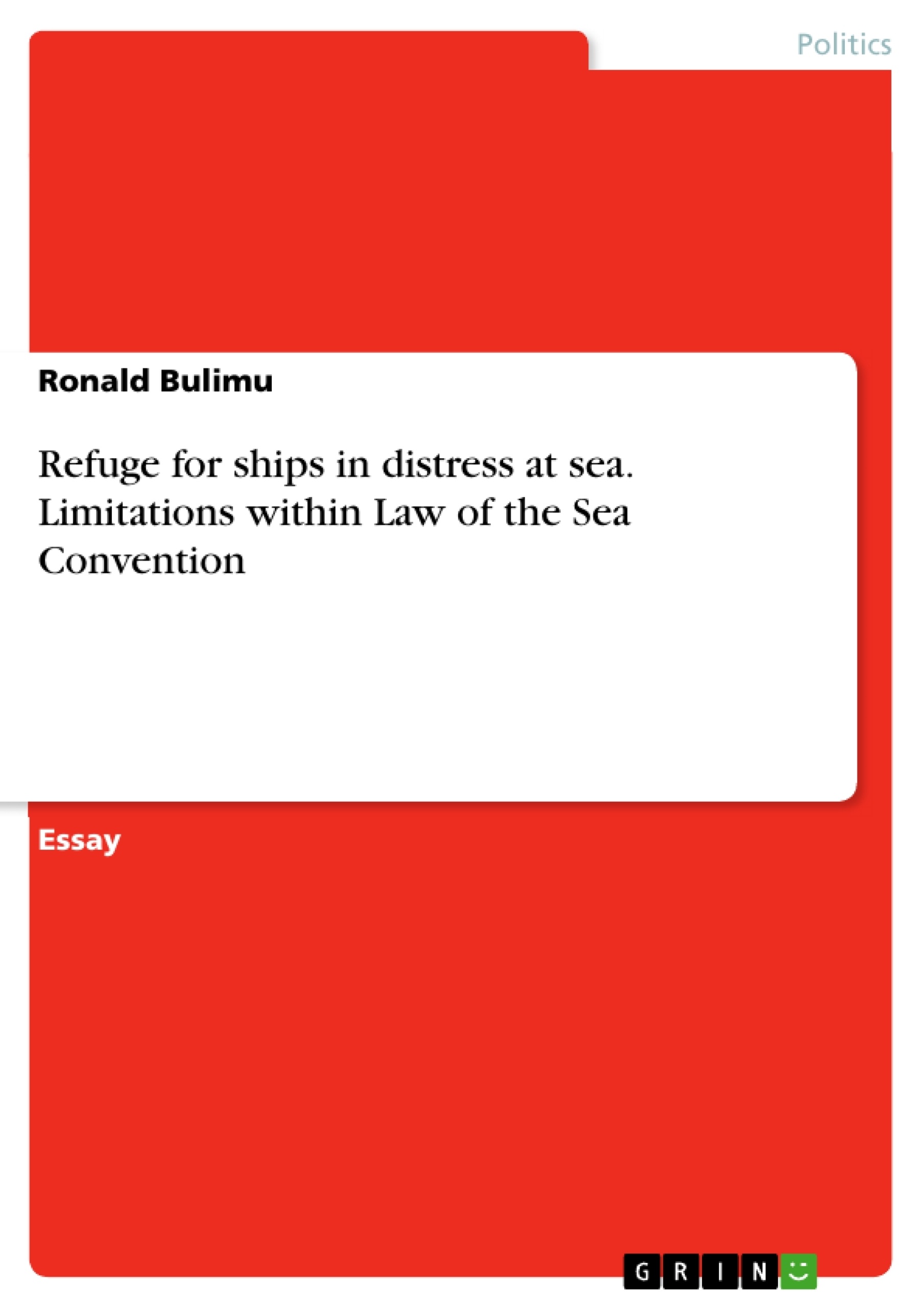This case study presents two critical questions: What are the dangers of exposing a distressed tanker to the open seas over extended period of time? To what extent would providing relief (access to port) to a ship in distress harm the coastal state rendering such assistance?
These two questions present one of the most controversial and pressing legal issue within law of the sea in the wake of high profile incidents of vessel-source pollution. The unwillingness of coastal states to grant access to their ports to vessels in distress at sea has attracted parallel opinions from different schools of thought. This could perhaps be attributed to the fact that UNCLOS (1982) which is considered as the constitution of the ocean; fails to provide an express legal order to matters relating to such access.
An analysis of the shortcomings within the 1982 LOSC on issues relating to refuge for ships in distress at sea forms the basis of this discussion. Build-up to the discussion will include a brief overview to the customary law perspective on issues of refuge for such ships and the international attitude to this issue through present state practices.
Table of Contents
- Introduction
- What defines a place of refuge for ships in international law
- Access to ports for ships in distress at sea and customary international law.
- State practices on access to ports by ships in distress
- LOSC 1982 and refuge for ships in distress at sea
- Conclusion and recommendations...
Objectives and Key Themes
This essay examines the limitations within the Law of the Sea Convention (LOSC) regarding providing refuge for ships in distress at sea. The essay explores the historical development of the right of access to ports for ships in distress, considering the evolving nature of shipping and associated risks. It examines the tension between the humanitarian imperative of providing assistance to vessels in distress and the concerns of coastal states regarding potential environmental damage.
- The historical development of the right of access to ports for ships in distress.
- The impact of geopolitical events, technological advancements, and the rise of globalization on the maritime industry.
- The legal framework provided by the LOSC 1982 and its limitations in addressing the issue of refuge for ships in distress.
- The tension between providing assistance to ships in distress and protecting coastal state interests.
- State practices and the emergence of bilateral and trilateral agreements to facilitate access to ports for ships in distress.
Chapter Summaries
- The introduction sets the stage for the discussion by referencing the MV Prestige case study, highlighting the critical questions surrounding the provision of refuge for ships in distress at sea. The essay aims to analyze the shortcomings of the 1982 LOSC in addressing this issue.
- This chapter explores the definition of a "place of refuge" and the historical evolution of the concept. The IMO guidelines on places of refuge are presented, emphasizing the focus on stabilizing the vessel's condition and reducing hazards to navigation and the environment.
- This chapter delves into the historical development of customary international law regarding access to ports for ships in distress. The shift from a widely accepted right in the 19th and early 20th centuries to a more complex situation in contemporary international law is explained. The chapter attributes this change to factors like the increased size and cargo capacity of ships, the use of hazardous substances, and coastal states' growing concerns regarding marine pollution.
- This chapter examines the current state practices regarding access to ports for ships in distress. It highlights the discretionary power of coastal states in granting or denying refuge requests, emphasizing the importance of balancing competing interests. Examples like the MV Erika and MV Prestige cases illustrate the complexities and challenges of this issue.
Keywords
The key terms and focus topics of this essay include maritime law, Law of the Sea Convention (LOSC), refuge for ships in distress, access to ports, customary international law, state practices, environmental protection, marine pollution, vessel-source pollution, and the balance of interests between coastal states and ships in distress. The discussion centers on the legal framework surrounding the provision of refuge for ships in distress at sea, highlighting the challenges and limitations within existing legal instruments.
- Citar trabajo
- Ronald Bulimu (Autor), 2019, Refuge for ships in distress at sea. Limitations within Law of the Sea Convention, Múnich, GRIN Verlag, https://www.grin.com/document/1006819



